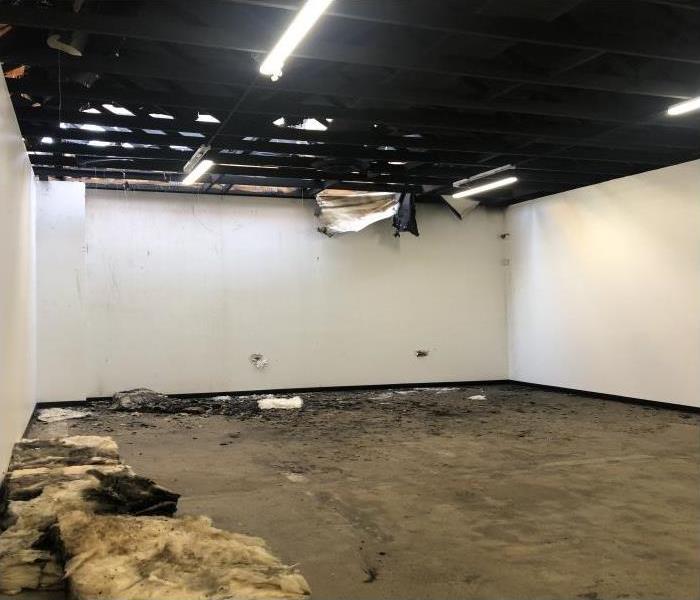What Is Considered Smoke Damage? A Simple List of the 5 Pesky Types
10/27/2020 (Permalink)
 Riverside commercial building sustained smoke damage from a next door fire. SERVPRO of West Riverside was there to help!
Riverside commercial building sustained smoke damage from a next door fire. SERVPRO of West Riverside was there to help!
SERVPRO smoke damage repair specialists help homeowners identify what to include in their fire damage claim
Cleaning smoke damage is an extensive process. Depending on the size of the fire damage, cleanup can take days to months to perform. Worst-case scenarios require removing and replacing damaged drywall to make it “Like it never even happened.”
If your home has recently suffered from a fire loss, you may wonder what is considered smoke damage for insurance purposes.
Insurance companies have a strict set of protocols and documentation they require to qualify for coverage. This article will go into detail about the different types so you can know what to expect!
Smoke damage inspections.
After a fire occurs in your home, the first step is to contact a certified fire damage restoration professional, like SERVPRO. The following inspection will gauge the extent of the smoke damage.
During this inspection, the fire damage professional will determine which type of smoke damage has affected your home. There can be different types within different areas, depending on the nature of the fire damage.
SERVPRO bases our cleaning procedures based on the information identified during the soot and smoke damage testing.
The 5 types of smoke damage
Five types of smoke damage can affect your walls and ceilings after a home fire–SERVPRO smoke damage repair crews offer services to clean the following type of residues:
- Wet smoke residues. Wet smoke residues result from smoldering fires with low heat. This type has residues that are incredibly sticky, smeary, and possess pungent odors. This type of residue is the most common type of smoke damage that occurs in Dayton home fires.
- Dry smoke residues. Dry smoke residues come from scorching fires. This type of smoke residue is often dry, powdery, and small.
- Protein residues. Protein residues are notorious for discoloring the paint and wallpaper on your walls. Protein residues leave an extremely pungent odor. During the SERVPRO smoke damage cleaning, the professional will install an air purifier to deal with the resultant smell from this type of smoke.
- Fuel oil soot. The best example of fuel oil soot is a furnace puff back. This type of smoke damage takes the form of thick black smoke filled with particles–these particles are the soot.
- Smoke webs. Smoke webs are residues from plastics and other synthetic materials. They form long chains of ionized smoke particles that stick to the walls and ceilings of your home.
Before starting the smoke damage cleanup and restoration process, the homeowner must stop the soot from spreading through the centralized air system. To complete this crucial step, shut off the air conditioning or heating and open all doors and windows to allow fresh air to enter. This action ensures that smoke and soot particles aren’t throughout the rest of the house.
Smoke damage cleanup tips.
The smoke damage cleaning process begins after the inspection and initial assessment. A trained professional will dust and vacuum any loose soot and smoke particles that have been created by the house fire.
Next, the professional will use a dry-cleaning sponge (chemical sponge) for any walls and other hard surfaces. The chemicals within the sponge remove the smoke and soot stains.
Water and any other liquid chemicals will spread the soot, making the affected area more extensive and, therefore, the cleanup more difficult. For this reason, we never use water or any soot cleaner before using the specialized sponge.
Smoke damage cleaning products.
The smoke damage repair process begins with an inspection by fire damage restoration professionals. During this, they will evaluate the type of smoke your particular fire created, what kind of damage is present, and the materials damaged during the event.
The smoke damage type will determine what kind of cleaning products are required. Our arsenal contains industrial-grade products to clean every type of smoke damage–from the basic to the most severe.






 24/7 Emergency Service
24/7 Emergency Service